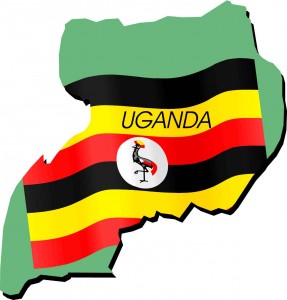 Forty years ago this month, in August 1972, President Idi Amin ordered the expulsion of Asians from Uganda. The expulsion was in many ways a classical move to divert attention away from the country’s political and economic troubles and on to a scapegoat minority. Predictably, it did little to help resolve Uganda’s problems, and in fact worsened them.
Forty years ago this month, in August 1972, President Idi Amin ordered the expulsion of Asians from Uganda. The expulsion was in many ways a classical move to divert attention away from the country’s political and economic troubles and on to a scapegoat minority. Predictably, it did little to help resolve Uganda’s problems, and in fact worsened them.
The population of South Asian descent in Uganda at the time was around 60,000, of whom about half held British passports (mostly giving them the ambivalent status of British protected persons); others could claim Indian or Pakistani citizenship, or had a claim to Ugandan citizenship. Many of the latter were rendered effectively stateless in the wake of the expulsion order. Most of the Asians left Uganda, leaving a small presence behind. The majority of those who had British passports were granted entry into the UK in the course of about three months in 1972. An unknown number made for India and Pakistan. Many of those made stateless or of undetermined nationality were resettled in Europe and North America.
Those expelled effectively became ‘twice migrants’ - a term that comes from Parminder Bhachu’s 1985 book on East African Sikh settlers in the UK. The Ugandan Asians’ forbears had been brought by the British from India in the nineteenth century to run the railways, serve in army or staff the civil service; then they were made to move on in a messy process of diasporisation – or ‘re-diasporisation’ perhaps. Unlike other South Asian migration over several decades to the UK and other places, this scattering was precipitated by a single episode, the 1972 expulsion.
Looking back
Despite the distress of the expulsion and the initial experience in holding camps, the resettlement of those affected was accomplished fairly effectively. The new arrivals in the UK faced hardship and hostility at first – many made for Leicester where their reception was mixed to say the least – but they nevertheless managed to establish themselves relatively quickly.
I organised a twenty year retrospective in 1992 at the Refugee Studies Centre in Oxford to mark the expulsion and explore its consequences. By then Ugandan Asians (like those who arrived a few years earlier from Kenya) had pretty much established themselves in the UK – they had got on to the property ladder, advanced through education, and got jobs in the professions. ‘Marching into the middle classes?’ was how one article put it in the special issue of the Journal of Refugee Studies (Vol 6, no 3, 1993) that came out of the conference.
This incorporation - middle class or not - has continued so that today Ugandan Asians are all but invisible in British society. The expulsion might figure occasionally in film - a cameo in The Last King of Scotland, for example, or in documentaries about the 1970s - but that’s been about it. Invisibility is arguably a mark of successful integration?
The fortieth anniversary is being marked though. Leicester Arts and Museums Service, for example, has put on a series of special events and exhibitions. From Kampala to Leicester: the story of Leicester’s Ugandan Asian community, 1972 – 2012 (www.leicester.gov.uk/ugandanasianstory) shows how Ugandan Asians adapted to life in the UK and how the community influenced the development of the city.
Tentative return
 Partly under international pressure, legislation was introduced in Uganda years after the expulsion to restore property or compensate for its loss, and Asians were encouraged to come back by the Yoweri Museveni regime. Quite substantial numbers returned to Uganda. Many had difficulties in reclaiming property, despite the legislation allowing restitution, but some have been successful. In some cases those returning have become very wealthy. One who left with his parents as a young man in 1972 returned decades later and now runs a bank, a private school, a club, and a resort and conference centre - which has hosted a reunion of those expelled in 1972. A new wave of migration from India to Uganda has emerged as returned expellees – or their descendants – bring in people to help them run their enterprises.
Partly under international pressure, legislation was introduced in Uganda years after the expulsion to restore property or compensate for its loss, and Asians were encouraged to come back by the Yoweri Museveni regime. Quite substantial numbers returned to Uganda. Many had difficulties in reclaiming property, despite the legislation allowing restitution, but some have been successful. In some cases those returning have become very wealthy. One who left with his parents as a young man in 1972 returned decades later and now runs a bank, a private school, a club, and a resort and conference centre - which has hosted a reunion of those expelled in 1972. A new wave of migration from India to Uganda has emerged as returned expellees – or their descendants – bring in people to help them run their enterprises.
In his contribution to the 1992 conference, Mahmood Mamdani – expelled himself in 1972 - underlined the heterogeneity of the Ugandan Asian population, and distinguished three groups within it after the expulsion. One was the tiny group who stayed after the expulsion: excluded from the patronage they had previously enjoyed, they pursued wealth through investment – sometimes successfully. The second group was the majority who made a home in their new countries of settlement. They had been salaried workers (mainly civil servants and teachers), professionals or petty traders. They had had limited assets in Uganda, for which they sought compensation rather than restitution. A third group was the fifty or so families who had owned substantial industrial, commercial and residential property, and who sought restitution of these assets.
Mamdani’s point was that it was this latter group with whom the ‘Ugandan Asians’ were identified, to the detriment of the less well-endowed majority. Twenty years on from these observations, more have returned but divisions essentially remain. The Asian population in Uganda now numbers several thousand, but there are more newcomers from South Asia than returnees from the diaspora created by the expulsion of 1972. The newcomers do not always see eye to eye with the local population; the returnees keep a foot in the UK or other diaspora locations.
Personal stories in a bigger history
I have got to know one Ugandan Asian family – originally from Goa – quite well. The extended family comprised eight siblings dispersed after the expulsion to the UK, Sweden and other places, like many other such families. Their father had come to Uganda with the British army in the late nineteenth century, later running bakery, tailoring and other businesses. His eight children were born and schooled in Uganda and Goa, reflecting the continued connection with Goan roots. Two of the brothers are now in their eighties. One was among the handful (maybe a hundred or so) who stayed and subsequently became a successful businessman: now semi-retired, he has brought in relatives to help him run his businesses. The other, a civil servant in Uganda, came to the UK with the 29,000 or so other arrivals in 1972. Having weathered some tough times, he found his niche socially: for nearly twenty years he ran an allotment site, which now in microcosm reflects Britain’s recent migration history – recent arrivals cultivating plots include Zimbabweans, Poles, Lithuanians and Nepalis.
There are some simple lessons from these personal and larger histories. Not least among the lessons is that, as well as harming those kicked out, expulsion is detrimental to those doing the expelling – Uganda went further downhill after the expulsion as parts of the economy were hit by the Asians’ departure. Another lesson is that, given the right conditions and will, people suddenly uprooted can be incorporated into a new society and help it to thrive. One obvious question is whether this would be possible in Britain today.
In the bigger picture, the Ugandan Asians today constitute one of the many diasporas that have emerged from conflict and turmoil over the last half century, sometimes able to turn misfortune to advantage through their networks spreading across the globe and reaching back to the place that once cast them out.
